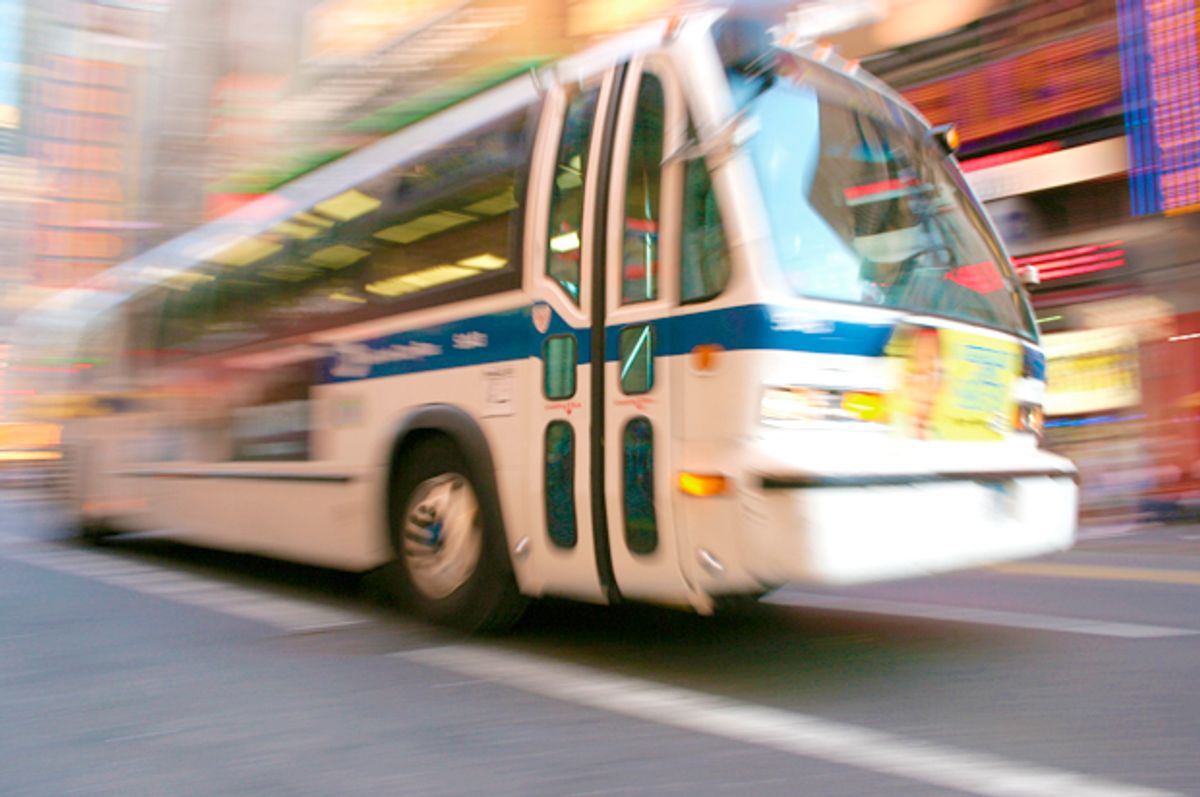Imagine riding in a vehicle that, for a small fee, picks you up at a predetermined location and drops you off at another predetermined location, making stops on the way and dropping off others who might be in the vehicle with you.
This sounds an awful lot like a city bus, right? But it’s exactly how ride-sharing giant Lyft is selling its new ride scheme, Lyft Shuttle. “Ride for a low fixed fare along convenient routes, with no surprise stops,” the company’s marketing declares.
Commenters around the internet roundly mocked the hubris of Lyft and its boosters in marketing an everyday public service as a faux-innovative private one.
http://twitter.com/surfbordt/status/876805235863408641
http://twitter.com/MikeBeauvais/status/876855568409014272
Private buses have become relatively common in Silicon Valley, though so far access to such commuter options has been largely restricted to tech companies' employees. Like Silicon Valley's notorious private commuter shuttles, the Lyft Shuttle competes with public transit. But as a venture-backed startup, Lyft, like Uber, has the power to undersell its competitor until its venture capital runs dry. Except in this case the “competitor” is a public good, and "underselling" it could further harm the efficacy of public transit in cities like San Francisco.
http://twitter.com/hayesdavenport/status/876846531676000256
If you study Lyft Shuttle's San Francisco routes, you can see clearly that its shuttles are designed to move people from the wealthier parts of town — like the Marina, Alamo Square, Pacific Heights and the rapidly gentrifying Mission District — to SoMa and the Financial District, where the bulk of the city's professional jobs are. Since Lyft Shuttle rides are comparable in price to that of a city bus, the main draw seems to be that you can avoid being near poor people; the Shuttle doesn't even approach working-class neighborhoods like the Richmond, Bayview or Outer Sunset and it strategically skirts poverty-stricken neighborhoods like the Tenderloin and Civic Center.
Some of those enticed by Lyft’s scheme seem to agree that this is the point. One commenter on a Lifehacker article about Lyft Shuttle praised the service: “Took a Lyft Shuttle this morning (SF.) It was $o.25 more expensive than the bus, required 0.4 miles less of a walk, and I rode in a Prius and not on a plastic seat next to someone who may or may not be actively exorcising their own demons. I’d say it’s a win.”



Shares